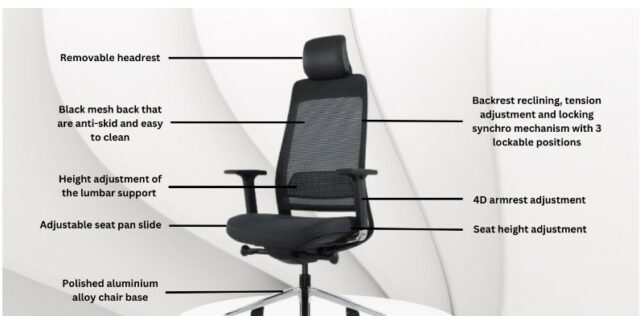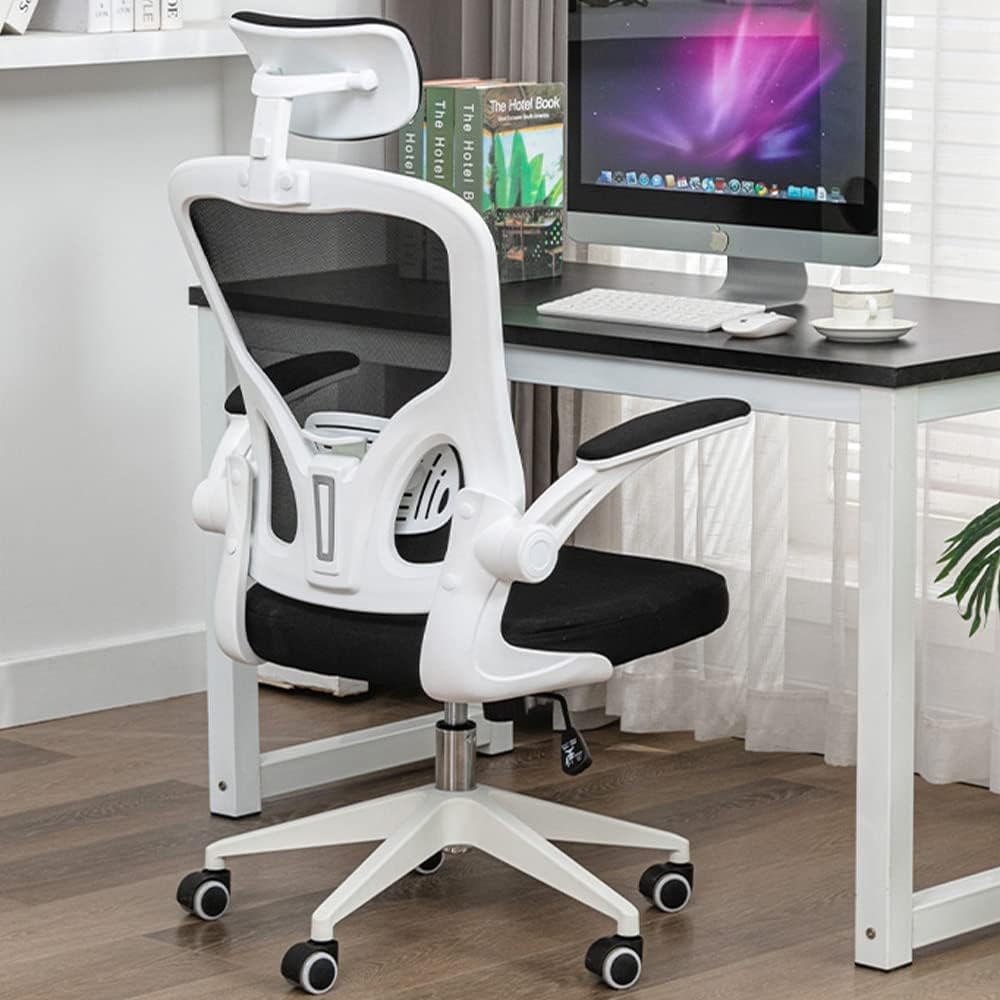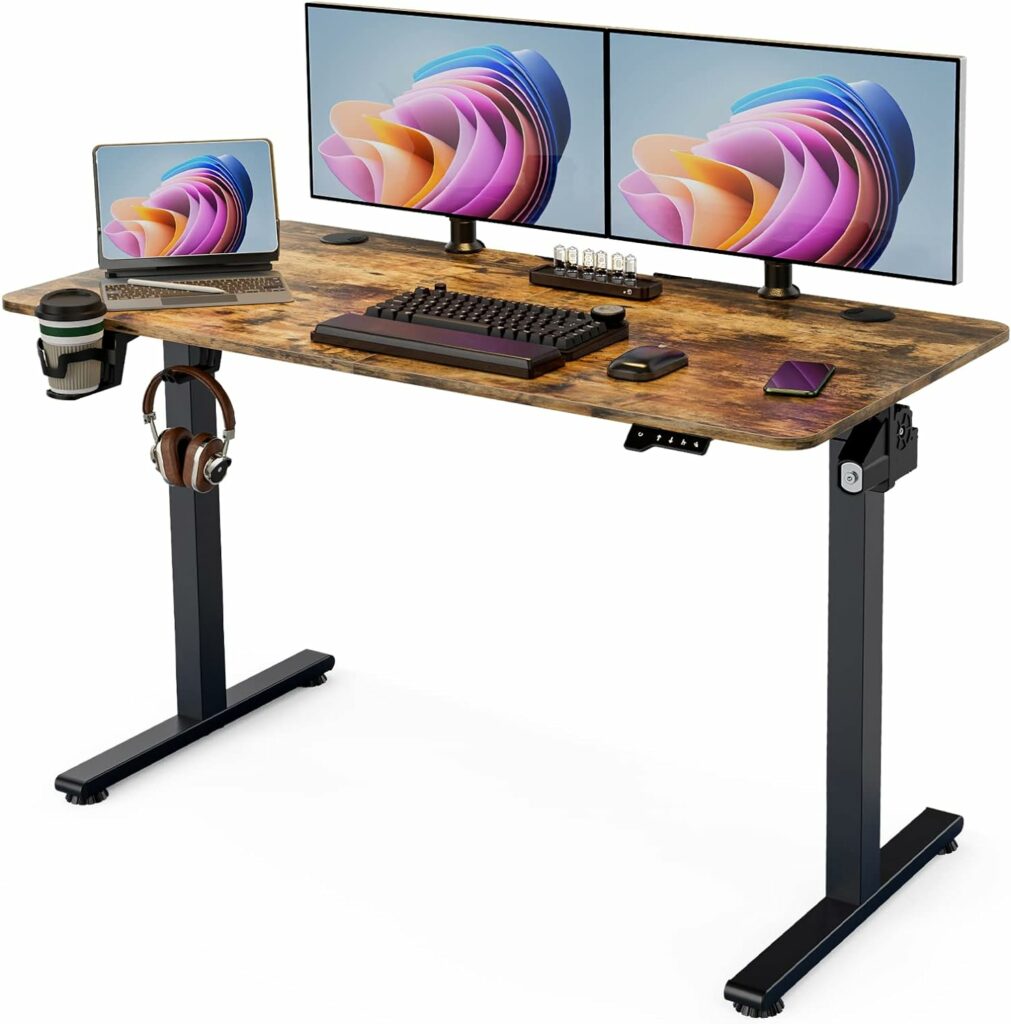
Introduction:
Chair ergonomics is one of the important health concern in office daily routine. In the modern era of remote work and prolonged screen time, understanding the significance of Chair ergonomics and table design is paramount. In this office-health talk, we delve into the concept of ergonomics, shedding light on its meaning, the benefits it brings, and the potential risks and serious injuries associated with non-ergonomic furniture choices.

Chair ergonomics defined:
Ergonomics refers to the science of designing and arranging products, systems, and environments to fit the needs of the user. In the context of chairs and tables, ergonomic design aims to create workspaces that promote comfort, efficiency, and overall well-being, reducing the risk of musculoskeletal disorders and enhancing productivity.

The Ergonomic Chair:
An ergonomic chair (or Chair ergonomics)is more than just a comfortable seat; it is a carefully designed tool to support the natural curvature of the spine, promote proper posture, and alleviate stress on the body during extended periods of sitting. Features such as adjustable height, lumbar support, and armrests contribute to a customized and supportive seating experience.
Benefits of Ergonomic Chairs:
- Reduced Strain: Proper lumbar support and adjustable features help reduce strain on the lower back, minimizing the risk of chronic back pain.
- Improved Posture: Ergonomic chairs encourage a neutral spine position, promoting good posture and reducing the likelihood of musculoskeletal issues.
- Enhanced Comfort: Customizable features allow users to tailor the chair to their unique body shape, providing a comfortable and supportive seating experience.

The Ergonomic Table:
An ergonomic table complements the benefits of an ergonomic chair by providing a suitable work surface that encourages a natural alignment of the body. Adjustable height, sufficient desk space, and proper monitor positioning contribute to an overall ergonomic workspace.
Benefits of Ergonomic Tables:
- Optimal Desk Height: Adjustable tables allow users to customize the height, ensuring that the desk accommodates their body proportions for comfortable use.
- Adequate Desk Space: Ergonomic tables provide enough surface area to accommodate necessary equipment, reducing clutter and promoting an organized workspace.
- Monitor Placement: Properly positioned monitors at eye level help prevent neck strain and reduce eye fatigue during prolonged screen time.
The Risks of Non-Ergonomic Furniture:
Choosing non-ergonomic chairs and tables can lead to serious health issues and discomfort over time. Prolonged use of unsupportive furniture may result in:
- Chronic Back Pain: Inadequate lumbar support contributes to lower back pain, a common issue among individuals using non-ergonomic chairs.
- Neck and Shoulder Strain: Poorly positioned monitors and improper desk height can lead to neck and shoulder strain, causing discomfort and potential long-term issues.
- Carpal Tunnel Syndrome: Incorrect keyboard and mouse placement on non-ergonomic desks can contribute to repetitive strain injuries like carpal tunnel syndrome.
Conclusion:
Investing in ergonomic chairs and tables is an investment in your health, comfort, and productivity. By prioritizing ergonomics in your workspace, you create an environment that supports your well-being and reduces the risk of serious injuries associated with non-ergonomic choices. Transform your workspace today, prioritize your health, and elevate your overall work experience with ergonomic furniture tailored to your needs.










